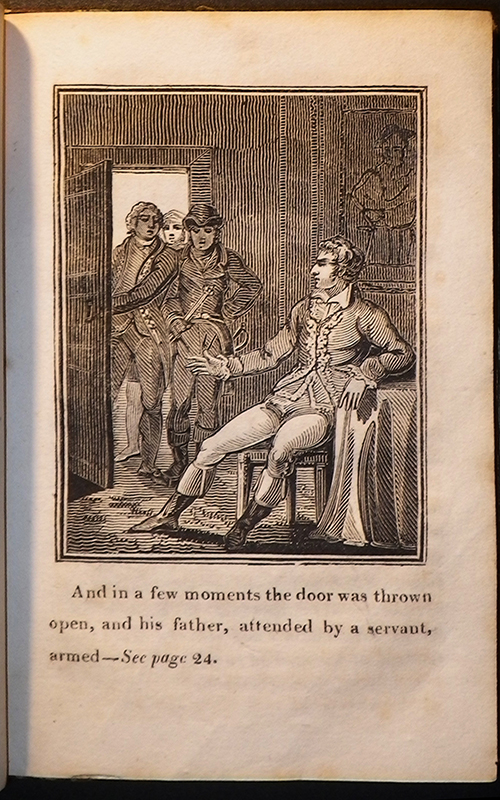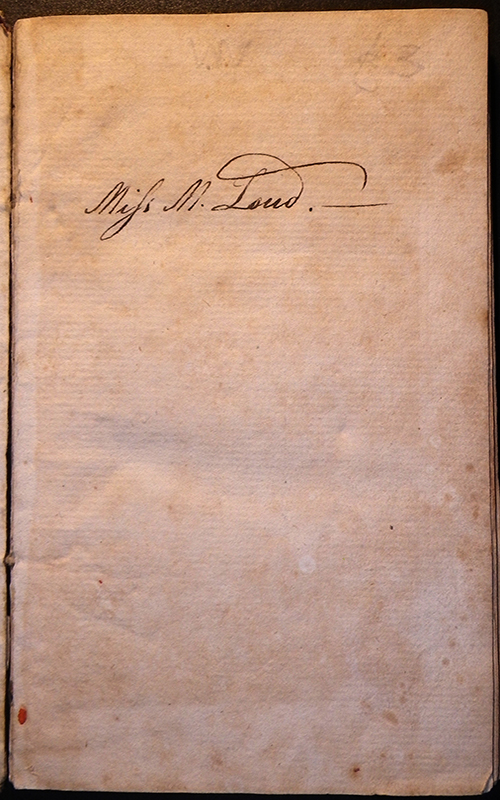Haywood's work is "A Story founded on Truth," concerning a Nobleman who had Return’d from a Thirteen Years Slavery in America where he had been sent by the Wicked Contrivances of his Cruel Uncle; however, this "tale of sympathy, founded on fact" depicts the unprecedented sufferings of an affectionate husband, and the forlorn state of an amiable mother, and her infant child. So, close, but no cigar.
There appears to be only five copies of The Unfortunate Young Nobleman; a tale of sympathy, founded on fact in institutional collections. These are held at British Library, Oxford University, Victoria and Albert Museum (x2), and UCLA. None of these eminent instutitions identify the source-text, which I quickly discovered after only a little hunting online (since it is discussed by a few critics): Helen Maria Williams (1759–1827), Letters Written in France, 8 vols. (1790–96); primarily, the first volume, which: contain[s] various anecdotes relative to the French revolution; and memoirs of Mons. and Madame du F----.
Like The Unfortunate Young Nobleman, the Letters Written in France tell the story of an unfortunate couple, whose names are dashed out in the form "F----". The "Mons. and Madame" indicated here were Augustin-François Thomas du Fossé (1750–1834) and Monique du Fossé (née Coquerel).
As the 18th Century Online Encyclopedia explains.
Throughout 1789 Williams befriended Monique Coquerel, a French woman exiled to London—the young wife of Augustin du Fossé, son of the Baron du Fossé who disapproved of Coquerel’s humble birth. Following the Baron’s death, his young son refused his title and thus embraced the basic tenets of the French Revolution. As an act of friendship, du Fossé invited Williams to France for the summer of 1790. Williams wrote copious letters describing her observations. These letters were later made public under the title of Letters Written in France in the Summer of 1790. This manuscript was but the first of eight volumes of letters devoted to Williams' observations of the events in France during and following the Revolution. The letters—Williams most popular work—are now known simply as Letters from France. For Williams, the persecution of the Fossés stood for the abuses associated with the ancien régime, and the Fossé’s ability to live in peace under the post-Revolutionary government demonstrated the freedoms associated with the Revolution.
The story of Mons. and Madame du Fossé was described as a "charming little nouvelle" by the Critical Review (in January 1791: here), so it is not surprising that it should have been the focus of at least two separate publications, the present chapbook, plus an earlier one: Memoirs of Mons. and Madame du F. In a Series of Letters, by Helen Maria Williams. Extracted from her Letters of the French Revolution (Boston, 1794)—a copy of which is available from James Cummins for USD850 here.
The Unfortunate Young Nobleman was published by Robert Harrild, who was at the London address given ("20, Great Eastcheap") only from 1814–24. I have taken my estimated date of publication (1820) from the most comprehensively catalogued copies, which are at the Victoria and Albert Museum; both in the "Renier Collection of Historic and Contemporary Children's Books". An impossibly early date of publication is offered by one of the few people to discuss the text—Mary A. Favret—who lists The Unfortunate Young Nobleman under the works of Williams, but dates the chapbook "1790"—not "ca.1790" or "[1790]"—in both The Idea of Correspondence in British Romantic Literature (PhD thesis, Stanford University, 1988), 136, 412 and her Romantic Correspondence: Women, Politics and the Fiction of Letters (1993), 263 [here]. Although the date was probably adopted from the title of the source text (Letters Written in France in the Summer of 1790), it may also, possibly, be a result of misinterpreting a footnote in a French monograph on Willians.**
As you can see above, like both the Renier copies, mine is in a "Trade binding of quarter … sheepskin with … paper boards" (mine being red and blue rather than green and brown). Like the Bodleian copy, it also has a name penned onto the ffep (as can be seen below): "Miss M. Laud." (The inscription on the Bodleian copy reads "Eliza Buxton, Old Kent Road".)
The price that is faintly visible on the ffep (£3) is not the price I paid. If that is what the vendor paid, then they multiplied their investment ten-fold, which still seemed like a bargain to me—but I have recently paid much more than that in postage for a piece of paper smaller than an address label, so my sense of scale may still be off.
* * * * *
* For a more "piquant" example of a Haywoodian title-chime, which has been responsible for at least two false attributions, see here.
** Lionel Douglas Woodward, Une anglaise amie de la révolution francaise: Hélène-Maria Williams et ses amis (1930), 32n72: "Voir: Lettres écrites de France pendant l'élé de 1790, dernière lettre. L'histoire des malheurs des du Fossé fut publiée seule, aussi bien que dans les Lettres, sous ce titre: The unfortunate young Nobleman …" [See: Letters written from France during the year of 1790, last letter. The history of the misfortunes of the du Fossé was published alone, as well as in the Letters, under this title: The unfortunate young Nobleman …]. Favret's error is repeated on the SIEFAR page for Williams here.
BTW: I have inserted above all the illustrations in this chapbook, because I love this style of woodcut and, in the correct order pretty-much tell the whole story; the illustrations are in the correct text sequence, illustrating passages on pp. 8, 20, 24, 42, and 52 (of the 71 pages).










No comments:
Post a Comment